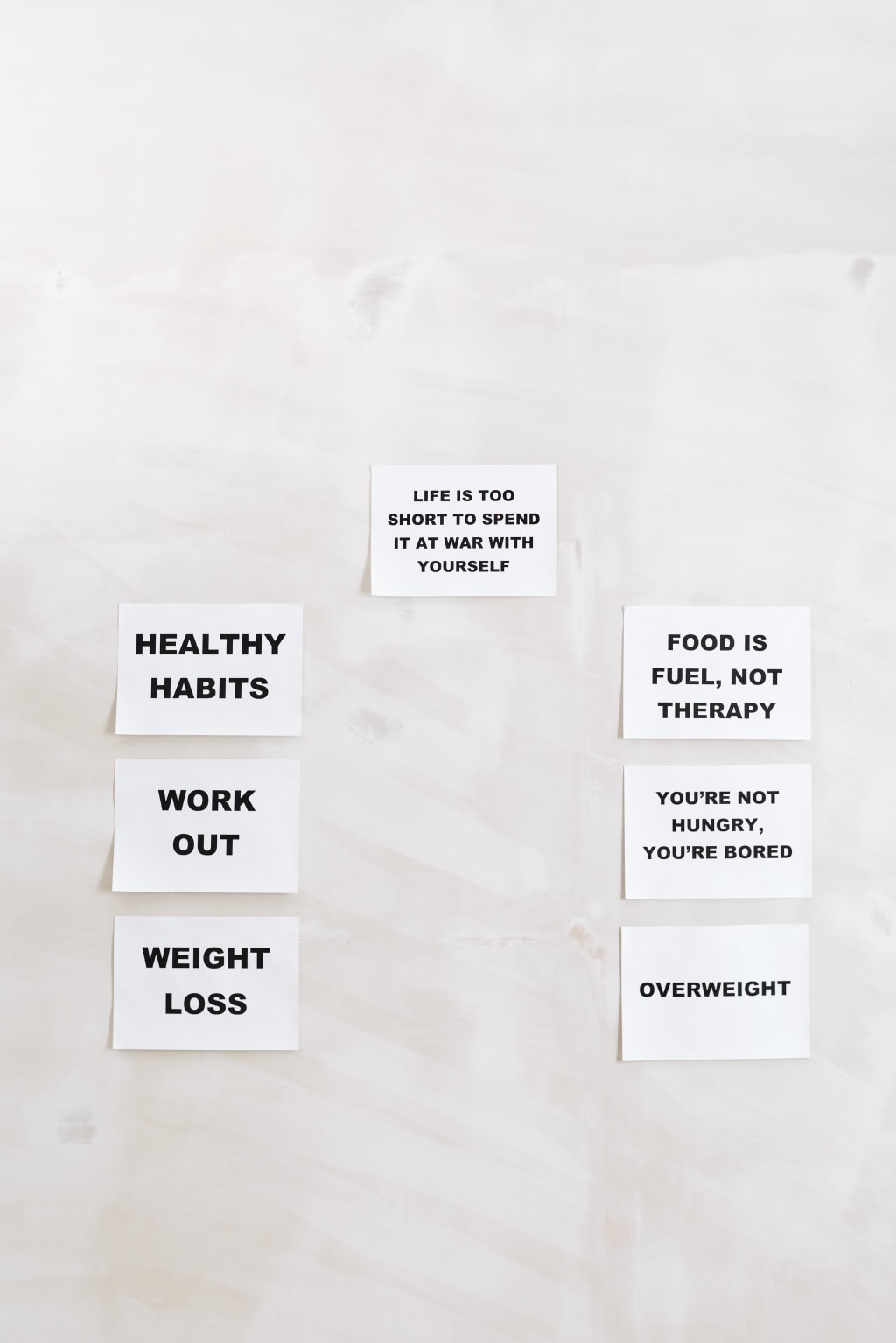Balancing Health and Work: Crafting a Preventive Health Plan for Busy Corporate Lifestyles
Discover strategies for a healthy work-life balance. Create a preventive health plan to prioritize well-being in busy corporate lifestyles.

Living a busy corporate lifestyle can take a toll on your health. The demanding work schedules, high levels of stress, and peer pressure often lead to neglecting one's well-being. However, prioritizing preventive health becomes crucial for individuals working in the corporate world. With limited time to exercise or plan for personal needs, developing a strategic health plan that fits seamlessly into your busy schedule is essential. You can significantly improve your overall health and well-being by making a few adjustments and investing in self-care.
Understanding Your Current Health Status:
Before you embark on any preventive health journey, assessing your current health status is important. This step will help you identify areas that require attention and provide a baseline for measuring your progress.
Assessing your physical health:
1. Regular medical check-ups and screenings:
Schedule regular visits with your healthcare provider to monitor your overall health. Routine check-ups and screenings can help detect any underlying health conditions at an early stage.
2. Evaluating vital signs and biometrics:
Monitoring vital signs such as blood pressure, heart rate, cholesterol levels, and body mass index (BMI) provides valuable insights into your physical health. Keep track of these indicators and consult with a healthcare professional to understand their implications.
Evaluating mental well-being:
1. Recognizing stress levels and triggers:
Working in a corporate environment often leads to increased stress levels. Recognize the factors that contribute to your stress and find healthy ways to manage it. Consider techniques such as mindfulness, meditation, or engaging in activities that help you relax.
2. Assessing sleep quality and patterns:
Adequate sleep is crucial for your overall well-being. Evaluate your sleep quality and patterns to ensure you are getting enough restorative sleep each night. If necessary, make adjustments to your sleep routine to improve the quality of your rest.

Identifying Health Goals and Priorities:
Once you have assessed your current health status, it's time to identify your health goals and priorities. Understanding your goal will provide direction and motivation for your preventive health plan.
Defining personal health objectives:
1. Weight management and body composition goals:
If weight management is a concern for you, set specific and realistic goals. Focus on maintaining a healthy body composition rather than striving for a specific number on the scale. Consult a nutritionist or a dietitian to develop a personalized eating plan that suits your lifestyle.
2. Improving cardiovascular health:
Cardiovascular health is essential for overall well-being. Set goals that involve regular aerobic exercise, such as brisk walking, cycling, or swimming. Aim for at least 150 minutes of moderate-intensity exercise per week and gradually increase the duration and intensity.
3. Enhancing mental resilience and clarity:
Mental well-being is as important as physical health. Prioritize activities that promote mental resilience and clarity, such as practicing mindfulness, engaging in hobbies, or seeking therapy if needed. Cultivate a positive mindset and learn stress management techniques to navigate the challenges of a corporate lifestyle.
Setting realistic timeframes and milestones:
1. Short-term and long-term goals:
Divide your health objectives into short-term and long-term goals. Short-term goals provide immediate targets that can be achieved within a few weeks or months, while long-term goals define your overarching aspirations. This approach allows for a sense of accomplishment along the way.
2. Breaking down goals into actionable steps:
Break your goals into smaller, actionable steps to make them more achievable. This helps create a clear roadmap for your preventive health plan. Celebrate each milestone you reach, as it reinforces your commitment and motivates you to continue progressing.

Designing Your Preventive Health Plan
Now that you clearly understand your current health status and have defined your health goals, it's time to design a preventive health plan that fits your busy corporate lifestyle. This plan will encompass various aspects, including nutrition and diet, exercise and physical activity, stress management and mental well-being, sleep optimization, and managing work-life balance.
Nutrition and Diet:
1. Balancing macronutrients and calories:
Focus on incorporating a balanced mix of macronutrients, including carbohydrates, proteins, and healthy fats, into your meals. Consult a nutritionist or dietitian to determine your caloric needs based on your activity level and health goals.
2. Incorporating whole foods and superfoods:
Opt for whole, unprocessed foods whenever possible. Include a variety of fruits, vegetables, whole grains, lean proteins, and plant-based sources in your meals. Additionally, explore the benefits of superfoods, such as berries, leafy greens, nuts, and seeds, which are packed with essential nutrients.
3. Meal prepping and healthy snacking:
To overcome time constraints, consider meal prepping on weekends. Prepare and portion healthy meals and snacks in advance, ensuring that you have nutritious options readily available throughout the week. This will help you avoid relying on unhealthy, convenient food choices.
Exercise and Physical Activity:
1. Incorporating regular workouts and movement breaks:
Schedule regular workouts that align with your preferences and fit into your schedule. Aim for a mix of cardiovascular exercises, strength training, and flexibility exercises. Additionally, incorporate short movement breaks throughout your workday to counteract the sedentary nature of office life.
2. Finding enjoyable activities:
Choose physical activities that you genuinely enjoy. Whether it's dancing, swimming, hiking, or playing a sport, engaging in activities that bring you joy will increase your motivation and consistency.
3. Utilizing office-friendly exercises:
Make the most of your time at the office by incorporating office-friendly exercises. Perform stretches, leg raises, or simple desk exercises to keep your body active and counter the effects of prolonged sitting.
Stress Management and Mental Well-being:
1. Incorporating mindfulness practices:
Practice mindfulness techniques, such as deep breathing exercises, meditation, or yoga, to reduce stress levels and promote mental well-being. Set aside a few minutes each day for these practices, or integrate them into your breaks throughout the day.
2. Prioritizing relaxation and leisure activities:
Make time for activities that help you relax and unwind. Engage in hobbies, spend time with loved ones, read a book, or listen to soothing music. Allow yourself moments of leisure to recharge and rejuvenate.
3. Seeking professional support if needed:
If you find it challenging to manage stress on your own, don't hesitate to seek support from a mental health professional. They can provide guidance, tools, and coping strategies tailored to your specific needs.

Sleep Optimization:
1. Creating a consistent sleep schedule:
Establish a consistent sleep routine by going to bed and waking up at the same time each day, even on weekends. This helps regulate your body's internal clock and improves the quality of your sleep.
2. Establishing a relaxing bedtime routine:
Develop a calming bedtime routine to signal to your body that it's time to unwind. This may include activities such as reading a book, taking a warm bath, practicing relaxation techniques, or listening to soothing music.
3. Enhancing sleep environment and habits:
Ensure your sleep environment is conducive to quality sleep. Keep your bedroom cool, dark, and quiet. Limit exposure to screens before bedtime, and avoid consuming caffeine or heavy meals close to bedtime.
Managing Work-Life Balance:
1. Setting boundaries and prioritizing self-care:
Establish clear boundaries between work and personal life. Prioritize
self-care activities by scheduling time for exercise, relaxation, and hobbies. Communicate your boundaries to colleagues and superiors to create a healthier work-life balance.
2. Effective time management techniques:
Optimize your time by prioritizing tasks, delegating when necessary, and utilizing productivity tools. This will help you streamline your work and create space for self-care activities.
3. Seeking support from colleagues and superiors:
Reach out to supportive colleagues or superiors who understand the importance of preventive health. Encourage each other to adopt healthier habits, and consider organizing wellness initiatives within your workplace.
Implementing Your Preventive Health Plan
Tracking Progress and Adjustments:
Now that you have designed your preventive health plan, it's time to implement it and track your progress along the way. Monitoring your journey will help you stay accountable and make necessary adjustments as needed.
1. Utilizing health and fitness apps:
Take advantage of the various health and fitness apps available today. These apps can help you track your workouts, monitor your nutrition, record your sleep patterns, and even provide guidance on stress management techniques. Find apps that align with your goals and preferences, and use them to monitor your progress.
2. Periodically reassessing goals and habits:
Regularly reassess your goals and habits to ensure they remain relevant and achievable. As you progress, your needs and priorities may change. By periodically evaluating your plan, you can make necessary adjustments to keep it aligned with your evolving lifestyle.
Overcoming Obstacles and Challenges:
Implementing a preventive health plan within a busy corporate lifestyle comes with its fair share of obstacles and challenges. However, with the right strategies and mindset, you can overcome them.
1. Strategies for dealing with work-related stress:
Develop effective strategies for managing work-related stress. This may include practicing deep breathing exercises, taking short breaks to stretch and relax, setting boundaries between work and personal life, and seeking support from colleagues or a mentor. Implementing stress management techniques will help you maintain a healthy work-life balance.
2. Coping mechanisms for time constraints:
When faced with time constraints, it's essential to find creative ways to incorporate healthy habits into your routine. Utilize shorter workouts, incorporate physical activity into daily tasks (such as taking the stairs instead of the elevator), and maximize your productivity during work hours to create pockets of time for self-care activities.
3. Adapting to travel and business trips:
Business trips and travel can disrupt your routine, making it challenging to stick to your preventive health plan. Plan ahead by researching fitness facilities at your destination, packing resistance bands or portable workout equipment, and opting for healthy food choices whenever possible. Even during busy trips, prioritize sleep and find moments for relaxation and mindfulness.
In summary, creating a preventive health plan that fits your busy corporate lifestyle is essential for maintaining your well-being amidst the demands of work. By understanding your current health status, setting realistic goals, and implementing strategies tailored to your needs, you can achieve optimal health and balance.
References:
1. Mayo Clinic. (2021). Prevention: What you can do. Retrieved from https://www.mayoclinic.org/healthy-lifestyle/adult-health/in-depth/prevention/art-20046545
2. Centers for Disease Control and Prevention. (2021). Health Screenings for Adults. Retrieved from https://www.cdc.gov/nccdphp/dnpao/features/health-screenings-for-adults/index.html
3. American Heart Association. (2021). Get Moving: Easy Tips to Get Active. Retrieved from https://www.heart.org/en/healthy-living/fitness/getting-active/getting-active
Join our Telegram Group "ActiveLife Society" -
About the Creator
Tushar Bhangale
Triathlon Coach, Movement Specialist, and Preventive Health Expert.
Founder of www.sculptingyoustrong.com.
Free Telegram Community https://t.me/+Kn6v5bPvyhgxMTE9
Follow more here






Comments
There are no comments for this story
Be the first to respond and start the conversation.